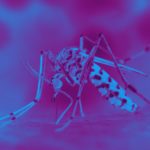Link to Pubmed [PMID] – 30262245
Vaccine 2018 Sep;
Acquired antibodies directed towards antigens expressed on the surface of merozoites and infected erythrocytes play an important role in protective immunity to Plasmodium falciparum malaria. P. falciparum erythrocyte membrane protein 1 (PfEMP1), the major parasite component of the infected erythrocyte surface, has been implicated in malaria pathology, parasite sequestration and host immune evasion. However, the extent to which unique PfEMP1 domains interact with host immune response remains largely unknown. In this study, we sought to comprehensively understand the naturally acquired antibody responses targeting different Duffy binding-like (DBL), and Cysteine-rich interdomain region (CIDR) domains in a Ugandan cohort. Consequently, we created a protein library consisting of full-length DBL (n = 163) and CIDR (n = 108) domains derived from 62-var genes based on 3D7 genome. The proteins were expressed by a wheat germ cell-free system; a system that yields plasmodial proteins that are comparatively soluble, intact, biologically active and immunoreactive to human sera. Our findings suggest that all PfEMP1 DBL and CIDR domains, regardless of PfEMP1 group, are targets of naturally acquired immunity. The breadth of the immune response expands with children’s age. We concurrently identified 10 DBL and 8 CIDR domains whose antibody responses were associated with reduced risk to symptomatic malaria in the Ugandan children cohort. This study highlights that only a restricted set of specific domains are essential for eliciting naturally acquired protective immunity in malaria. In light of current data, tandem domains in PfEMP1s PF3D7_0700100 and PF3D7_0425800 (DC4) are recommended for extensive evaluation in larger population cohorts to further assess their potential as alternative targets for malaria vaccine development.

